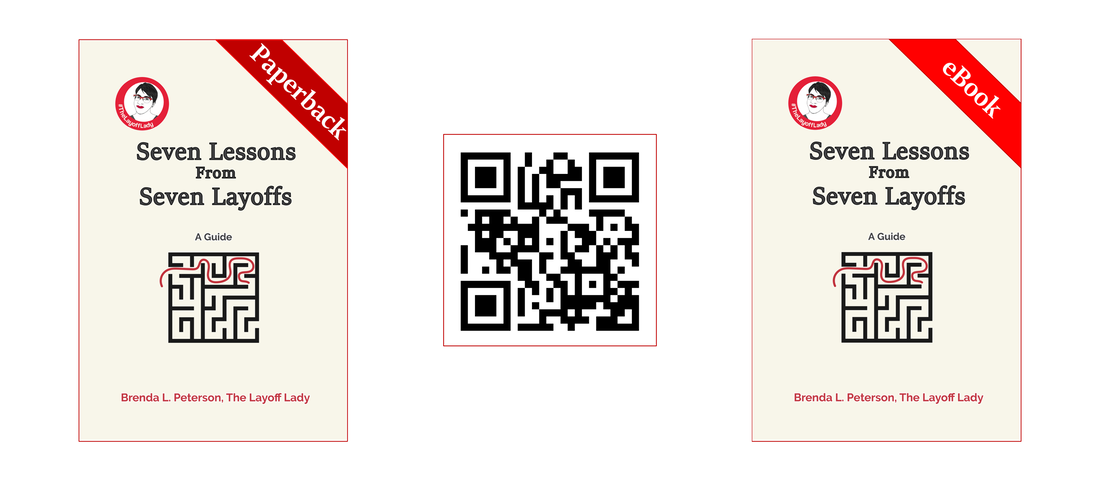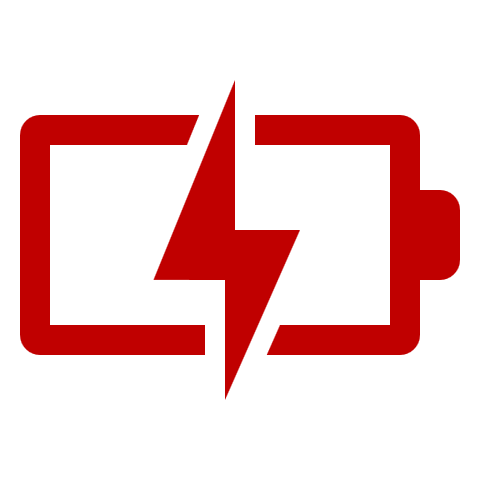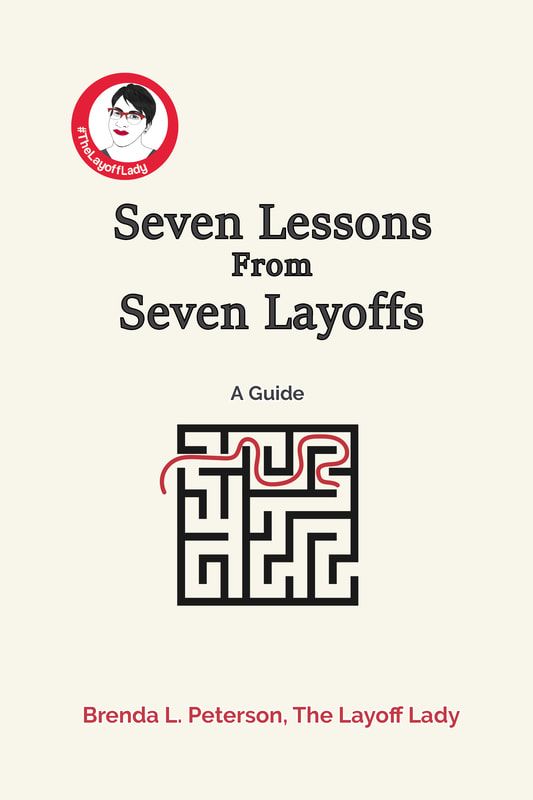|
By Brenda L. Peterson, The Layoff Lady About Personal BrandingWhether you're actively job searching or just trying to build your professional network, sharing content on social media is a great way to demonstrate your value. By identifying topics that people with your professional focus care about and sharing related content, you will help people associate your name with those areas of expertise. While regularly sharing content is valuable, it can also be time-consuming. Here are three tools I regularly use to organize and streamline this process. Google AlertsOn LinkedIn, you will share some content that you directly create. This might include a post about an event you attended, your career news, or your observations on a given topic. When it comes to LinkedIn, most of my content includes articles on critical topics of interest, with some introductory commentary framing the value I see in the article. This means I need to locate and collect those articles to post them as needed. One way I locate helpful content on each topic is to set up a Google Alert for keywords or phrases relevant to my professional skill set. Each Google Alert sends you an email with new online content regularly. Here are a few examples of what Google Alerts you may want to set up:
After you identify the keywords for topics that people in your industry talk about, create alerts to keep a steady stream of content coming to you. Flipboard serves two essential purposes. First, you can follow exciting topics and see content other users share. Second, you can use Flipboard to create magazines on a given subject area and bookmark content that interests you for later use. Here are a few ways you might find content to save in a Flipboard magazine:
Gathering possible information to post when you run across it, organizing it, and making it easy to access will save you a lot of time figuring out what to post. BufferWhile the other two tools are about finding and organizing possible content to post, now let's look at a tool to schedule those posts. There are several tools available to help you manage social media posts. Currently, I use Buffer. This online platform has a free version that will enable you to manage posting on up to three social media platforms. When my goal is building my professional network and job searching, I focus on LinkedIn. Buffer enables you to create, schedule, and update posts as needed. When searching for a new role, I may post as often as daily. When focusing on building or maintaining my network, I may post once or twice a week. The Learn More section includes recommendations on how often and at what times you may want to share content for the greatest impact. Creating A Post When I create a post to share an article, I often include the following details:
Here are a few examples:
Learn More
0 Comments
By Brenda L. Peterson, The Layoff Lady Messaging With Your ConnectionsOne of the benefits of having connections on LinkedIn is that you can directly send them messages without having a paid subscription. However, this feature has also been used poorly on several occasions. Let's look at how to use LinkedIn messaging effectively to continue building professional relationships and provide some guidelines for how to use this feature well. The Value of Mutually Beneficial RelationshipsTo have a valuable professional newtork, make sure those relationships are mutually beneficial. Networking is about give and take. Make sure that you are adding value along the way. This includes sharing useful content, congratulating people on their accomplishments, and answering one-off questions when people ask for advice. In short, be a good LinkedIn neighbor. If you give more than you take, your LinkedIn connections will be more likely to help you when you need it. Messages That Add ValueWhen directly contacting your LinkedIn connections, make sure you are not overfocused on asking for favors. It is important to provide value first. Here are a few types of messages that give more than they take:
Make sure you are not THAT PERSON who only reaches out when they need a favor. Direct Asks For Help: Worst PracticesAsking for help is an art. First, you need to be willing to ask for help. Next, you need to craft your ask in a way that you have a higher likelihood of getting that help. Here are a few significant issues I’ve seen from people attempting to ask for job search help:
The Worst AsksHere are a three questions that may not get you much of a response:
Why are these not good asks? For one, these are big requests that require a lot of effort to do well. For example:
Direct Asks For Help: Better PracticesHere are a few better asks, but may only work with connections who you know very well and who you have helped in the past:
These requests are specific, which is better, but each is still a sizeable request. The first two may be time intensive. The next two involve your connection putting their reputation on the line to recommend you for a role. The final one requires a block of time on your connection's calendar. Depending on our interactions prior to these requests, their response may vary from “of course!” to no response at all. Again, remember to make sure your asks are aligned with how well you know one another. Direct Asks for Help: Best PracticesAsks are better when they are more specific and less time intensive. It’s also helpful if there is context. Here are a few asks that are more likely to get responses. The requests earlier in this list are more likely to get a response.
People Get To Say NoRemember, when you are asking for help, people will tell you no. More likely than telling you a direct no, they may just not respond. Ever. Keep in mind that job searching, like sales, means that you're going to hear a whole lot of no on the way to that one yes you need. When you need a specific thing, it's useful to ask multiple people for help to give you a better chance of getting a response. It's also not personal. We're each on LinkedIn using it to varying degrees and all trying to accomplish our own goals. Making sure that you are making the relationships mutually beneficial will make it much more likely that people will respond to you and want to lend you a hand when you need it. Learn More
By Brenda L. Peterson, The Layoff Lady Preparing for a Positive ScenarioContingency planning is not the most upbeat topic. It's all about making a backup plan just in case something terrible happens. Instead of predicting doom and gloom, let's update our planning approach and focus on opportunity readiness. Opportunity readiness is about thinking about who you truly are, what you want your work life to be, and living into that future. When you step into that role of being the CEO of you, your focus shifts to what you want to be and positioning yourself for that success. If you've done that, you'll be able to identify what an amazing opportunity is for you--and be ready to go for it! An Opportunity Presents ItselfEven when you like your current company, position, or coworkers, sometimes you might hear about an opportunity that could be the right next step for you in your career. Here's what that might look like:
In each of these cases, you weren't actively looking for a new role. However, once you heard about the opening, you realized it might be just the thing you were looking for and found out more! Opportunity ReadinessOpportunity readiness is a part of career resilience that may not always occur to us. When people are not actively job searching, sometimes they neglect to make new networking connections, keep in touch with people they know, update their LinkedIn, or update their resume. However, these are EXACTLY the things to prioritize. Knowing what you want, staying in touch with your network, and always evolving your skills will position you to move quickly when the time comes. Your ResumeYour resume is the main document potential employers want to see. Even if someone contacts you about an opening, you’ll need an up-to-date resume to be considered. This document needs to summarize who you are as a candidate as well as your most relevant skills, work history, education, professional affiliations, and accomplishments. This is where you can shine! Keeping your resume current is a crucial first step. Including details on your current role, adding newly earned credentials, and highlighting recently used skills can help you shine. Getting a resume out the door within a couple of hours can improve your chances of being seriously considered. It's also a great way to help the person who connected you with the opportunity feel even more sure that you're a great fit! Your LinkedIn ProfileLinkedIn is your professional billboard to the working world. It is an all-purpose marketing tool where people can view information beyond your resume, see which other people and companies you may have in common, and read the content you share in your posts. When people are gainfully employed, they often stop fine-tuning their profiles and interacting with their professional connections. Taking time to polish your LinkedIn profile and posting content on your areas of expertise is a way to remind people of you and your professional value. In fact, continuing to be active on LinkedIn may very well be why someone contacts you about what might be the perfect opportunity for you. A great way to remind people of who you are and what you're good at is by posting relevant content. Sharing a picture of you leading a training session, or an article about a great new way to optimize a project will help people associate you even further with your skillset. Your Work SamplesYour work samples, often called your portfolio, are a way to demonstrate the skills you mention in your resume or LinkedIn profile. These work samples should give the hiring team an idea of your process and finished product examples. Creating a portfolio is not something that most people can quickly throw together. There are several steps, including identifying your overall portfolio goals, developing or selecting work samples, positioning each work sample to showcase your professional capabilities, and determining the technological aspects of how you might set up your portfolio. Since some employers may require a portfolio before seriously considering you for a role, pulling this together and updating it as needed can help make you success-ready. As you complete interesting projects,remember to add those to your portfolio It' s nice to have your portfolio grow and change as you evolve your skills. What Do You Think?What do you think would prepare you to move quickly on an opportunity if one presented itself? Include your thoughts in the comments. Learn More
by Brenda L. Peterson, The Layoff Lady Adding Value Through CommunicationIt’s amazing how much of the job search process involves waiting to hear back and trying to communicate with the hiring team in a way that adds value. One easy way to strengthen your relationship with the hiring team is by sending a thank you note. While you could send a paper thank you note, I usually opt for a thank you email message given the prevalence of virtual interactions. But Why?During the interview process, your main goal is to position yourself as someone who would be an excellent direct report to the hiring manager and an awesome team member for your future coworkers. One easy way to be more likable is to be grateful and appreciative of people and their time. Sending a thank you email is a great way to do just that. Thank You Message BasicsSending a thank you message is another chance for your interviewers to see your name and have a positive experience with you. Who doesn’t like to be thanked for doing a thing? Here are key details to include in your post-interview thank you message:
Here’s the core content to include in a thank you message: Hi, Peter. Thanks so much for meeting with me earlier this week to discuss the Super Cool Support Manager position with Best Company Ever. It was great getting a chance to talk with you, Paul, and Mary about the support team and this opportunity. I am definitely interested in learning even more about the role. If you have additional questions, feel free to contact me via email at [email protected] or via text/phone at 555-555-5555. Thanks again! --Brenda Next Level Thank You Message MagicIn addition to the basic message, without writing a full-on manifesto, take the time to add a little more relevant information. This is an excellent opportunity to add more details and value to the interaction. This will also help make you more memorable. Here are a few suggested points to cover:
Here's what the message to the hiring manager might look like: Hi, Peter. Thanks so much for meeting with me earlier this week to discuss the Super Cool Support Manager position with Best Company Ever. It was great talking with you, Paul, and Mary about the support team and this opportunity. Learning about your new knowledge base and help desk ticket prioritization model was great. I’m excited to join an organization committed to documentation and continuous process improvement. As we discussed, here are a few relevant skills I bring to the table:
In addition, here is the link to the article I mentioned entitled “18 Knowledge Base Examples That Get It Right." Chapter 9 in this article covers some of the metrics we were discussing: https://www.helpscout.com/helpu/knowledge-base-examples/ If you have additional questions, please feel free to contact me via email at [email protected] or by text/phone at 555-555-5555. It was great getting a chance to talk with you—and I hope you have a great time on your fly-fishing trip this weekend! --Brenda Here's what a message to one of your future coworkers, Mary, might look like: Hi, Mary. It was great meeting you earlier this week to discuss the Super Cool Support Manager position with Best Company Ever. I enjoyed talking with you, Paul, and Peter about the support team and this opportunity. My experience working at Not Quite As Cool Company will help me add value to the team. I also hope you have fun on your upcoming trip to Minneapolis. As a fellow coffee lover, I suggest you stop at Dogwood Coffee Company. It’s honestly the best cup of coffee I’ve ever had and well worth the trip. It sounds like you’ll be staying not too far from their Northeast location. Here is the address: https://www.dogwoodcoffee.com/pages/locations If you have additional questions for me (professional or coffee related), feel free to contact me via email at [email protected] or via text/phone at 555-555-5555. Thanks again! --Brenda Thank You Note TimingI used to quickly send thank you messages right after I completed an interview. That way, the message would arrive in each person's inbox within a half hour after our conversation. Now, I wait until the next day, or even two days, to send the thank you. This puts time between our initial conversation and when they get this "remember me--I exist, and I'm awesome" message. Much like commercials, ads, or billboards remind you of the existence of a product or service you might want, I used my thank you messages as a second touchpoint with that person. Learn MoreBy Brenda L. Peterson, The Layoff Lady The Challenge: Describing What You DoWhether you're searching for a new role or thinking about your professional development, not having the right words to describe your skillset can hinder your progress. Identifying your career keywords will help you create effective messaging for your LinkedIn profile, resume, conversations with colleagues, and other written communications like email and social media posts. Where To Start: LinkedIn and KeywordsHere is my recommendation for how to begin gathering keywords that align with your chosen profession:
Let me take you through an example. Search for Your Target Job TitleI searched LinkedIn's Jobs section for Business Partner Organizational Development in the United States. From the results, I selected ten currently open positions to review further (because I'm an overachiever like that). Here are those job titles:
Lesson Learned: When you search for a job title, your results will include a variety of titles different companies use. Be sure to review the job description to learn more about what that company expects from that role. The duties for the same job title might vary widely from company to company, as might the terminology they use to describe it. Identifying Skills and KeywordsTotal Number of Different Skills Returned for All Ten Jobs For the 10 jobs I reviewed, 69 different skills were included in the results. For context, if all roles had the exact same skills, this number would be 10. If all of the roles had different skills, this number would be 100. Lesson Learned: Not only will job titles vary across organizations, but what skills they value can also differ. Be sure to review the job description to learn more about what skills the company thinks will help make someone in that role successful. Specific Skills Returned For More Than One Job Several skills came up more than once across those ten jobs. Here is the number of times a specific skill appeared for more than one role:
Lesson Learned: Even if there is not widespread agreement on the terminology used across organizations, some keywords will show up more often. Consider including popular keywords in your skills section on your LinkedIn profile and in your resume. Different Keywords for Similar Skills While specific keywords like "communication" and "problem solving" appeared more than once within the 10 job descriptions, several related terms might be included instead. Here are a few groups of terms that take different approaches to describing similar concepts:
Lesson Learned: When you look at the groupings of keywords, you can see the broader areas where roles like this would operate. Each company may use slightly different terminology regarding the skills that they value. When you talk about the work you do, consider weaving some of these words into your stories. What Do You Think?How do you identify the right keywords to use to describe what you do? Share your thoughts in the comments. Learn More
By Brenda L. Peterson, The Layoff Lady The Value of a Backup PlanCareer Resilience is all about being ready to deal with what comes. Thinking through scenarios, or contingency planning, is one way to prepare for possible outcomes. By thinking through your next steps before you are in that situation, you can ensure that you are better prepared. When Work Is GreatWhen you’re in a good place at work, it’s hard to believe things would ever be any other way. Your boss supports your professional growth, your work fulfills you, your coworkers are amazing, and you can’t imagine a time when it could be any other way. Conversely, there are times at work when you’re less than thrilled about your situation. Scenario: It's Time To Move OnHere are a few indications that might prompt you to start to think it’s time for you to leave your current role:
Budget ImplicationsOnce you decide that you need to leave your current job, it’s important to take a look at your financial state. Your ability to pay your bills without the income you receive from that job will be a major factor in your next steps and timeline for leaving your role. If you have other streams of income, household members who can cover bills with their income, or savings that you are willing and able to spend on your core living expenses, you may consider leaving your job right away without a new one lined up. Be sure to think through the insurance implications of making a job change, too since your healthcare coverage might end with your job. You will need to determine how you will pay for any health-related costs. This could include switching to a family member's plan, finding and paying for other health care coverage, or determining how to handle possible healthcare costs outside of an insurance plan. Each of these options has a different price tag and level of risk. Act Now and Figure It Out LaterKnow, too, that if your current position is bad enough, you may decide that leaving right away is worth the financial hit you’ll take. Be sure to pause and think through the implications of potentially not having a main income stream and how you will cover your basic living expenses in that interim. Maybe you'll get a roommate, sleep on a friend's couch, or just deal with issues as they come. Regardless of what may make sense to others, you get to make the decision that is right for you. Launching a Job Search While WorkingMany people will choose to stay at their current job until they are able to find another one. This way, you’ll still have a paycheck coming in while you also search for a position that is a better fit. From a purely financial standpoint, this is often the best choice. Looking for a job while you’re already employed is a different challenge. You’ll need to get your job search toolkit together so that you’re ready to apply for opportunities as they arise. You’ll also need to juggle doing your current job while also actively searching for another role. Since finding a new job takes as long as it takes, you may have to live in this state of uncertainty for a while until something new works out. Maintaining Job Search MomentumWhen you’re working and also looking for a new position, maintaining your job search momentum can be a challenge. As you face job search rejection, you may be discouraged and not put in as much time looking for a new role. You may apply for roles only sporadically and not make much progress. You may also find that you’ll have good days and weeks at that job you’ve decided to leave. You may also have times when things are going well enough at your job that you temporarily slow down your job search activity. Then, you may have a rough week at work and renew your commitment to finding something new. Possible Contingency Planning StepsBefore you are in a position where you realize you need to leave your job, it’s valuable to do some preliminary thinking about how you might manage each of these factors. Consider doing the following to help inform your contingency planning: Your Income
Your Expenses
Your Savings
What Do You Think?What questions do you think you need to focus on as you do your contingency planning? Share your thoughts in the comments. Learn More
By Brenda L. Peterson, The Layoff Lady Resume ObservationsRecently, I have talked with many colleagues who are proactively updating their resumes. After we talk a little about what type of a position interests them, I usually give them additional feedback about preparing a resume to apply for a specific job. As a many-time hiring manager, I have seen lots of bad and lots of sort-of-okay, and just a few resumes that were really, really good. For me, a resume needs to answer three fundamental questions. Having a resume that addresses each of these will helpg you get you out of the no pile and into the “I am excited to talk with them” pile. Question 1: Does This Person Want This Job?In a previous job, I was working on filling an instructional designer position on my team at a software company. I received one resume where the person’s career objective stated that they wanted to be a curator at a museum. The good news: this person knew what they wanted and made it clear in their resume. The bad news: they didn’t want the job I had available. Most (like maybe a good half) of resumes that end up in the “no” pile are so nondescript that they could be applying for any number of office positions. Once, when I was hiring for a technical trainer position, I received a resume for someone with a lot of experience working as a corrections officer. The good news: this person had many potentially transferable skills. The bad news: I didn’t know if this person was interested in this particular role or was mass applying for anything that wasn’t their current job. Overall, do just enough tailoring on your resume, so the hiring manager knows you are interested in the available job and applied for it on purpose. Given how costly a bad hire can be, help the hiring manager know that you want to do the job in question. Question 2: Can This Person Do The Job?Once I know a given candidate wants the job, I look for some indication that the person has the skills to do the job. Some candidates’ work experience is neat and tidy and points logically toward the open role. For example, they were a call center representative, then a senior call center representative, then a call center supervisor, then a call center manager. If they were applying for a call center manager position, from their job titles alone, I could be reasonably sure they could do the job. With that, adding in keywords from the job description and adding details about their previous education and work responsibilities as they relate to this specific position, it’s not a stretch to think they are qualified. If the candidate didn’t have much experience in a similar role, I’d expect them to describe what they did in previous positions and show how their work experience prepared them for this role. For example, if I’m hiring for an instructional designer position, the job description might include “collaborate with subject matter experts to create learning materials for client-facing courses.” If someone with a background as an elementary school teacher applies, they should show how their previous work experience relates to the available position. For example, they might include “collaborated with subject matter experts in the media center to create learning materials for a course for parents on encouraging their children to read more.” Without emphasizing those transferable skills, I might not be convinced they could perform the required tasks. Overall, be sure to make it apparent that you can do the core tasks that the job requires. Question 3: If I Hire Them, Will They Stick Around?Filling an open position takes a long time and is a huge gamble. The goal is to find someone who wants the job, can do it, and will want to be in that position (or a part of your organization) for a good long time. This part of resume assessment is teeing up the phone screen and helping me determine the questions I need to ask. For example, will this salary be in line with their desired salary range? Will they be happy working from the office or working from home for the amount required? Will they work well with this organization's structure and formality level? Will they want to travel as much (or as little) as is needed with this job? Are they going to be happy managing or not managing people? As a hiring manager, details in the resume are helpful as a starting point for those questions. Sharing information on what you want in a role, and drawing comparisons between the role you're applying for and your preferences, wil help make this more clear. Learn Moreby Brenda L. Peterson, The Layoff Lady Interviewing for a New RoleAs a many-time layoff survivor, I have done quite a few job searches and had lots of interviews. Not long ago, I read an article about a job searcher who opted out of one hiring process. He did this after making it through three rounds of interviews and having the organization ask about arranging the next six (yes, 6) rounds of interviews. I felt compelled to share my story about one seemingly never-ending interview process. Unfortunately, like with many things in life, it took a bad experience to teach me how to make better decisions. Job Interviewing Boundary Setting is HardLet me start by taking a moment to acknowledge that this is not always easy to do. It is hard to set boundaries when you’re hip-deep in a job search, especially when you’re unemployed. The longer the search goes on, the easier it is to tell yourself that you’ll summit Everest if a potential employer asks you to as part of possibly FINALLY getting a paying job. Consider this your reminder to realize that jumping through more and more hoops doesn’t necessarily mean that you’ll end up with a job at the end of the process. Do your future job-searching self a favor and think through what your boundaries are when it comes to participating in a given company's hiring process. (We'll revisit this a little later.) The Perfect Job! (or was it...)During this particular job search, I was laid off at the end of the summer. From previous job searches, I hoped to find a new position before Thanksgiving because otherwise, it might be until February or March before I secured a new role. I was very excited when I ran across THE PERFECT JOB! It was an opening for a training director position within an easy commuting distance where I even knew someone who had connections within the organization. Lesson Learned: Don’t fall in love with a job. Even if it seems like “the perfect job,” it is not yet “your job.” Apply, and hope for the best, but keep on applying. Until you have an actual accepted job offer, it is not “your job. The Inside ScoopI met with my professional connection, and they filled me in. I learned about the organization, their clientele, their mission, the key players in the hiring process, and helpful background information. My connection even put in a good word with the organization (they had left on good terms.) I also learned that the company had some turnover in this position, so they were trying to make sure they did their due diligence and hired the right person this time around. Lesson Learned: Gather and synthesize information even when you’re excited because you found THE PERFECT JOB. This company having gone through two people in the role in a relatively short time period and being concerned about making another hiring misstep is something I heard and noted. Still, I didn't really take it to heart. In this case, the company was trying (maybe a little too) hard to hire the right person for the role. It may have also indicated something about the company or the position that caused people not to stay. My future self knows to synthesize information more carefully--and not overemphasize only the good things. The Phone InterviewsI applied, and my connection put in a good word for me. The company quickly reached out to me for an initial phone screen. Then a phone interview. Then another phone interview. Then yet another phone interview. After four phone calls—each where the new interviewer seemed excited about me as a candidate and talked about who else I needed to talk to—I started to wonder what the game plan was for this whole process (aside from their overwhelming and often stated goal of not to make a hiring mistake). Lessons Learned: In the initial phone screen or the first interview, ask about the hiring process. This includes their estimate of when this process will be over (a week? a month? 6 months?) and the critical steps in the process. Decide your boundaries and be ready to decide the number of hours you are willing to dedicate to interviewing for this role. Remember, you are interviewing them, too. Make no assumptions. Don't get so excited that they keep wanting to talk with you that you keep going, not knowing how many hoops there are to jump through. The Work SamplesIn addition to talking to different interviewers on multiple occasions, the company wanted to see instructional design work samples from me. I emailed work samples and reviewed them with a subject matter expert who was well-versed in adult education and instructional design. They complimented me on the trainer guide, videos, and job aids I had created. They told me they were impressed with my work and learned from what I told them. At this point, they told me the next step was for me to meet with the company founder. Lessons Learned: Have a portfolio online that people can access, or let people know that you are happy to review work samples (and your process) with them in an in-person or Zoom meeting. I keep my work samples online with a note that these are intended to showcase my work and that they are not to be downloaded and distributed. The Zoom MeetingsI was excited to meet the company founder, who was also a published author. In preparation, I bought and read their most recent book, researched their accomplishments, read their blog articles, and reviewed their body of work. During the interview, we had a great conversation, which included a lot of “when we work together” and “next steps” language. This meeting was followed by multiple Zoom meetings with different stakeholders (again, one at a time) explaining the next steps in this process—which they called an “in-box experience.” During this phase, I would come into their office and work for a half day. I would have a chance to interact with multiple people I would work with, including consultants and a client. This would require me to sign a non-disclosure agreement, work on a project for an actual client, and present information to a client. Lessons Learned: No matter how many interviews you have, or how much they seem to like you, remember you do not have the job until they have made you an offer and you have come to an agreement about your compensation. Remember that the goal of this process is that the employer decides if they want to work with you, and you decide if you want to work with them. Looking back, I'm frustrated with myself that I invested SO MUCH TIME with this potential employer without talking about salary expectations. The In-Box ExperienceThe Wednesday before Thanksgiving, at 8:00 am, I arrived at the company's downtown office location for my in-box experience. I brought my computer and the work I had done so far. (BTW--there was a project and pre-work that I did, which took way too long. Holy time suck.) I was told that I needed to use their computer for my work that day. During the four hours that I was there working (for free) for them, I had an in-person panel interview with people I had talked with via phone, interviewed via Zoom with a consultant, ran a project meeting, completed work on instructional materials for a client, and got feedback on my performance along the way. I had a final conversation with one of the decision-makers before ending my day. I was told I'd hear back early the following week. Lessons Learned: Determine ahead of time how much you are willing to do for a role, and when to call it. Remember, you're interviewing them, too. And, for the love of God, don't do a ton of unpaid labor for a business that is not paying you for your work product. Thanks, But NoIn the middle of the following week, I got a call. It was very brief. Thanks for my time, but they had decided not to proceed with me as a candidate. If I like, though, they would be willing to add me to their possible consultant database for future contract work. Lesson Learned: Never again. In short, I spent about 45 hours total, including about 15 hours of unpaid work that I did for the company, to end up with no job offer. Time to transition all of these lessons learned into new personal guidelines. My Fancy New Job Search BoundariesRemember the boundary setting I mentioned before? Here's where we revisit it. After going through this process (and getting mad all over again while writing this article), I am reminded of the outcome of those lessons learned for me.
Learn MoreBy Brenda L. Peterson, The Layoff Lady About The Seven Layoff LessonsThrough my seven layoffs and many conversations with others in post-layoff career transition, I have learned seven core lessons:
About Layoff Lesson Seven: Assess, Adapt, and Rise AboveWhen you’re searching for a new job, there are always challenges. Like with any system you put in place to solve a problem, it’s helpful to compare the actions you’ve been taking to your results. It's valuable to review where you are getting stuck during the hiring process and updating what you're doing so you can see more success. Let's look at some of the challenges you might face. Interview Progression IssuesAfter you apply for a job, your goal is to be selected for an interview. That process usually includes an initial phone screen, one or more face-to-face interviews, and then a job offer. Let’s look at possible places you might get stuck and how to evolve your approach.
Additional Job Search ChallengesEven when you have good results with your overall job search and hear back from companies on specific roles, you’ll still face challenges. Let’s look at a few:
You are the CEO of YouAt the end of the day, remember your role as the CEO of You and make a decision that aligns with your overall career and life goals. That might mean adjusting your requirements as your search goes on or holding out for what you really want. You get to decide what matters most to you and change your mind as needed. For The Whole StoryFor all the information on each of the seven lessons pick up a copy of my book Seven Lessons From Seven Layoffs: A Guide. Learn MoreBy Brenda L. Peterson, The Layoff Lady About The Seven Layoff LessonsThrough my seven layoffs and many conversations with others in post-layoff career transition, I have learned seven core lessons:
About Layoff Lesson Six: Examine Your Energy to Take Control of Your TimeEven when you have a general idea of what needs to happen, sometimes it’s hard to translate higher-level information into specific activities. Sometimes, even when you have a clear sense of your goals and a well-written to-do list, another obstacle remains. Even when you know what your top priorities should be and how urgent those tasks are, you still can't manage to get those crucial things done. How is that even possible? In short, it all comes down to our energy. When life is puttering along as planned, we don’t have to spend undue effort living our everyday lives. Post-layoff, a lot changes. Losing your job upends your life and gives you a whole new set of challenges you simply have to figure out. These problems also come with uncertainty about the future, new complexities in your financial life, and anxiety about how long it might take to get back to something that could be called normal. You are now entering an unplanned phase in your life where you will experience more rejection in a shorter period of time than ever before. All of this change and rejection can take its toll. Managing Your MindsetBe sure to leverage your Realistic Optimist mindset by reminding yourself that good things are coming—as long as you put the work in to get there. While you can accomplish a lot, you’ll never be able to do absolutely everything that may contribute to your success. Instead of setting unrealistic expectations for your ongoing productivity, you need to prioritize where you spend your energy and your time. Leading and Lagging IndicatorsWhen pursuing a big goal, it's important to focus on taking the small steps that will help you achieve your larger goal. Many times, we think of the end goal--for example, an accepted job offer is one of the ultimate measures of job search success. Having a new job is a lagging indicator. That means that it is a big goal that won’t happen for a while and has many contributing factors. Too often, people overfocus on achieving a big goal (lose 50 pounds, write a book, run a marathon) but skip over the smaller steps that build toward that huge goal. This is where leading indicators come in. Leading indicators are all of the tasks you need to complete to position yourself to achieve that bigger goal. Leading indicators are those smaller, checkoffable things you can control. For job searching, those might be applying for three jobs a week, sending LinkedIn connection requests for two people per week, and sending thank you notes after an interview. Consistently doing those leading indicators will help you achieve those lagging indicators. All Hours Are Not Equally ProductiveWhen I’m in career transition, I spend a lot of time writing, applying for jobs, and interacting on LinkedIn. I also tend to rewatch TV shows and movies. Conventional time management would say that I’m wasting a good chunk of my life. In reality, it is not feasible to produce noteworthy results all the time. Achieving at a high level requires preparation and adequate recovery time. That means if I have two video interviews in one day, I will appear to be doing nothing for those couple of hours right afterward. The only way I can knock those interviews out of the park is by managing my energy well. Reflect on Factors Influencing Your EnergyAs you think about how to spend your time, learn about yourself and when you will be the most productive and happiest with each activity. I interact with LinkedIn posts during my first cup of coffee, enjoy afternoon walks, and do yoga at night before bed. There are no absolute right or wrong times for most things, just ones that are a better fit for you. Take time to reflect on your most and least productive times of day. Do you excel in the morning, or do your best work late at night? How much structured time do you need? How much social time do you need? These answers will help you gain a sense of how to get the most out of each day. Energy Builders and PrioritizationPlain and simple, there is not enough time to do everything you could possibly do. Therefore, it’s crucial to prioritize your time. This helps ensure you are doing the highest value activities that get you closer to your goal. Know that saying yes to higher-value activities--like having a job interview or meeting with colleagues--means you’ll have to say no to other activities. If socializing drains you, you may skip a social gathering and rest to recover and prepare for other job-searching tasks. Also remember that energy builders, like resting, walking outdoors, or medication, can help you sustain the energy levels needed to work toward your goal for as long as it takes. For The Whole StoryFor all the information on each of the seven lessons, pick up a copy of my book Seven Lessons From Seven Layoffs: A Guide. Learn More |

Just get laid off?
Click here for info on what to do first. Author7-time layoff survivor Brenda L. Peterson, The Layoff Lady, waxes poetic on layoffs, job transitions, & career resilience. Buy The Book!Were you recently laid off from your job and need a roadmap for what's next? Pick up a copy of my book, Seven Lessons From Seven Layoffs: A Guide!
Categories
All
Archives
July 2024
|






















